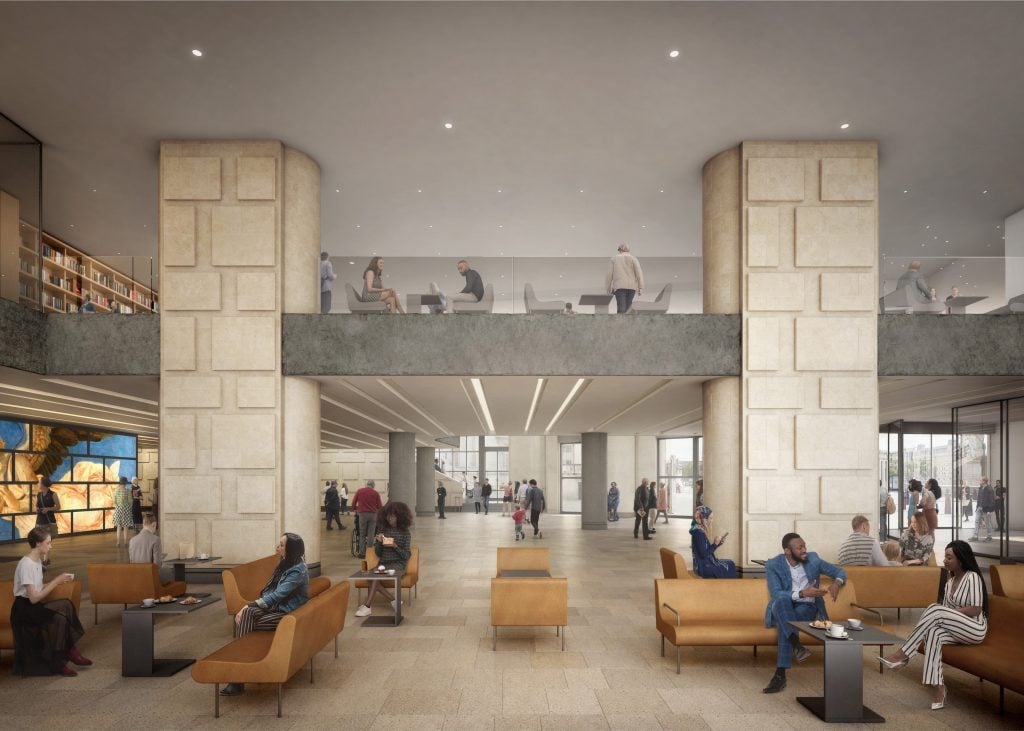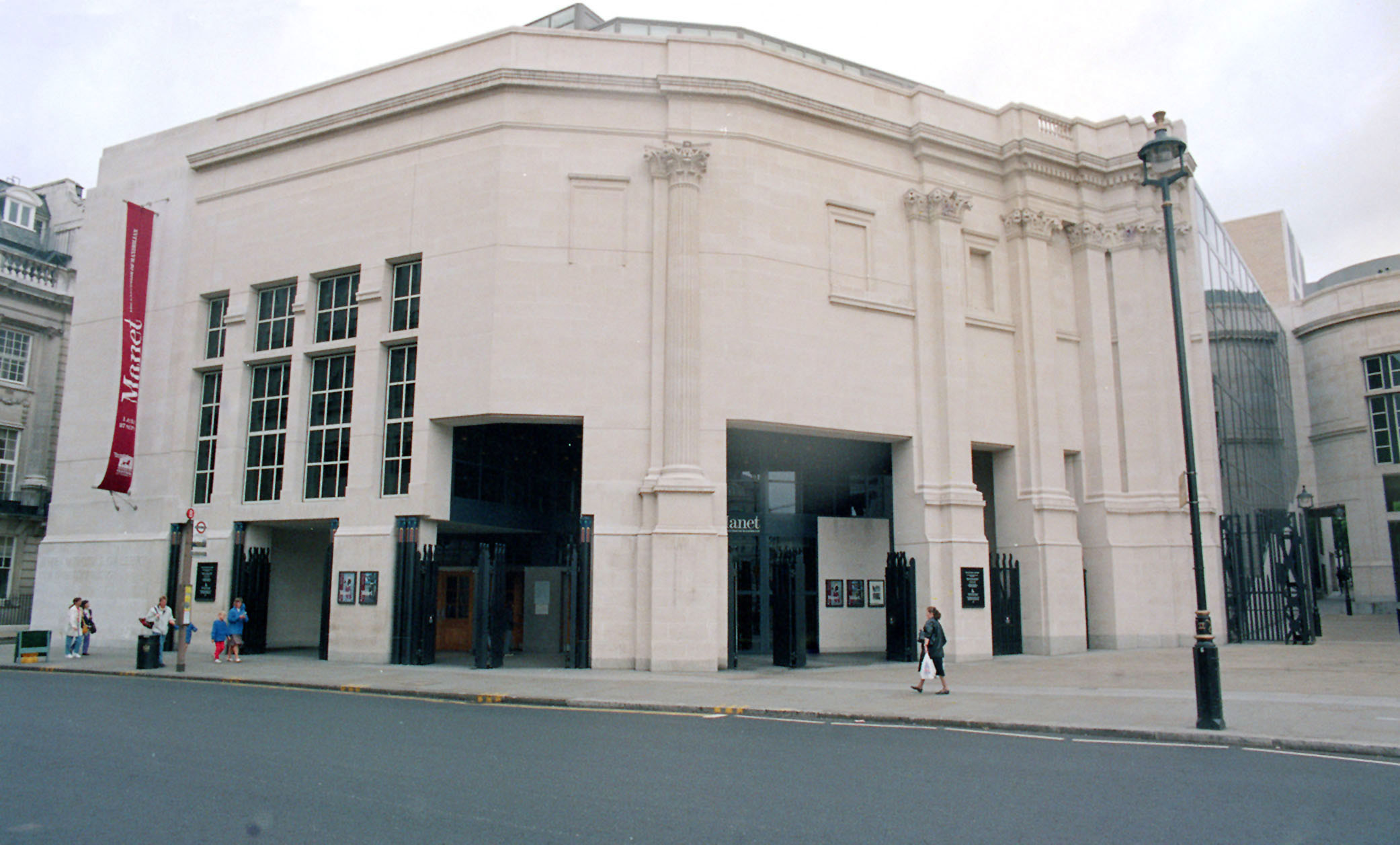In the late 1980s, the Sainsbury brothers, operators of the U.K.’s second largest supermarket chain, bankrolled a project to build a new wing at London’s National Gallery. The museum needed space to accommodate increasing visitation and the first design had been ditched after the then-Prince Charles called the proposed glass and steel tower “a monstrous carbuncle.”
The American post-modernist duo of Robert Venturi and Denise Scott Brown stepped in offering a contemporary twist on the National Gallery’s neoclassical main building. On the exterior, the architects worked with the same Portland limestone, cutting unusual openings into it and reworking the original façade’s pillars, capitals, and cornices. Inside, they created a crypt-like foyer that led via a grand staircase to the galleries.
Interior of the Sainsbury Wing at the National Gallery in London, 1991. Photo: View Pictures/Universal Images Group via Getty Images.
The eldest brother, John Sainsbury, despised aspects of the design, in particular the false columns in the foyer. Despite concerted pushback and the fact that the Sainsburys were footing the reported £40 million ($53 million) bill, the development went ahead.
Now, the Art Newspaper has revealed that, in 2023, demolition workers discovered a secret letter written by John Sainsbury buried deep inside one of the two false columns. Typed in block capitals on Sainsbury’s-headed stationary, the letter is dated to 26 July, 1990, and makes the supermarket magnate’s displeasure plain.
The National Gallery in London is renovating its Sainsbury Wing and they’ve just found a secret letter from one of the original donors, sunk into a concrete column, saying that he hates the columns and is glad they’re being demolished.
10/10 unhinged rich man behaviour, no notes pic.twitter.com/q56QpaNFKi— madeline odent (@oldenoughtosay) August 27, 2024
“If you have found this note you must be engaged in demolishing one of the false columns that have been placed in the foyer of the Sainsbury Wing of the National Gallery,” the note, typed in all caps, began. “I believe that the false columns are a mistake of the architect and that we would live to regret our accepting this detail of his design. Let it be known that one of the donors of this building is absolutely delighted that your generation has decided to dispense with the unnecessary columns.”

Lord John Sainsbury. Photo: PA Images via Getty Images.
Although John Sainsbury, considered a great benefactor of U.K. arts, died in 2022, his widow Anya was on site shortly after its removal from inside the false column. “I was so happy for John’s letter to be rediscovered after all these years,” she said. “I feel he would be relieved and delighted for the gallery’s new plans and the extra space they are creating.”
It is believed Sainsbury was granted access to the building while it was under construction and secretly dropped his letter, protected by a plastic folder, into the concrete column.

Rendering of the proposed redesign of the Sainsbury Wing. Courtesy of Selldorf Architects.
Neil MacGregor, who was the National Gallery’s director when Sainsbury Wing was planned and developed, defended Venturi’s design that blocked sightlines and concealed entrances in a statement. “Venturi had a coherent idea of the organic link between entrance hall, staircase and main galleries. I felt that, on balance, we should let the architect be the architect,” he said.
The removal of the false columns took place as part of £85 million ($112 million) renovation of the Sainsbury Wing. The redesign, courtesy of Annabelle Selldorf, a New York-based architect, aims to create a brighter and more open space through curving glass and white walls. It, too, has been widely criticised.
The refurbished Sainsbury Wing is due to open to the public in May, 2025.
Follow Artnet News on Facebook:



